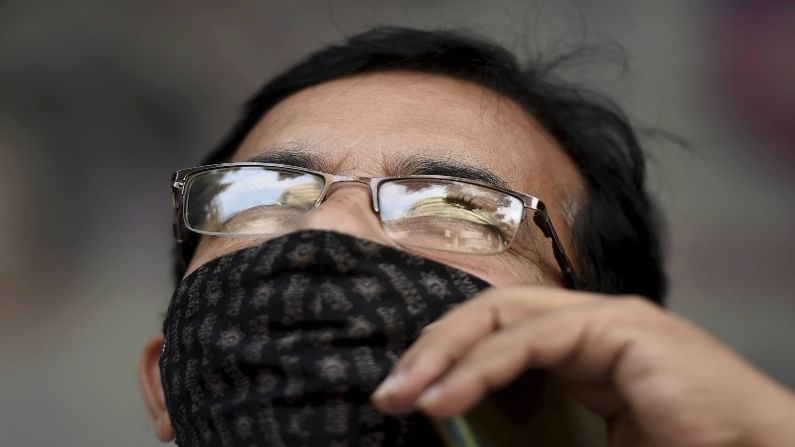Stay cautious! These two factors are biggest risks for global markets this year
In an interview with Money9, Ruzmik Oza, Executive Vice-President, Head of Fundamental Research at Kotak Securities, shares his views on the factors which may put some pressure on the ongoing rally

Lingering concerns over fuel prices and rising bond yields in India have raised concerns over the negative impact on various asset classes, including stock markets. The yield on the 10-year bond is hovering around 6.13% from the recent low of 5.76.
The benchmark BSE Sensex dropped over 200 points in opening trade on Monday tracking losses in index majors HDFC, ITC and L&T amid tepid cues from global markets. The escalation in Covid-19 cases in Maharashtra is also emerging as a cause of major concern.
In an interview with Money9, Ruzmik Oza, Executive Vice-President, Head of Fundamental Research at Kotak Securities, shares his views on the factors which may put some pressure on the ongoing rally in the domestic equity market.
Edited excerpts:
Q: Do you think soaring fuel prices is a major risk for Indian markets?
Oza: Soaring petrol and diesel prices are a concern as it could lead to a spike in inflation and an increase in the freight cost. The severe winter in many countries has led to higher demand for crude which in turn has led to higher fuel prices.
We need to wait and see if the spike in crude prices is temporary in nature once winter recedes. Earlier when crude prices had fallen sharply the government had increased excise duty on diesel and petrol. The oil marketing companies have so far managed to raise fuel prices to match the increase in global crude prices. We are not sure about the ability of oil marketing companies to raise prices beyond a point given the high retail fuel prices. Till the time brent crude prices remain below $70 it could be manageable.
If the Indian economy grows at the desired 14% nominal GDP growth that is projected for FY22 then higher crude prices could be absorbed. During the FY04-08 high growth phase, Indian markets sustained the uptrend even though crude prices went up sharply.
Q: Is it time to be cautious? Where do you see Sensex and Nifty by December-end?
Oza: On a global scale, the record retail participation, speculative element in the F&O market and surge in cryptocurrencies somewhere indicates bubble formation in parts of the market. Not sure how this is going unfold when things cool down.
On the other hand, the massive stimulus which is likely to continue in this calendar year and economic recovery put together should provide support to markets at lower levels. For India, most of the factors driving markets are in place except for valuations. As we are trading in a new zone, we need to reassess our thesis and assumptions every now and then looking for any negative clues that can spoil the party.
One can remain invested for the time being by keeping a watch on global interest rates and bond yields as they are the biggest risk factor for global markets this year. We expect global bond yields to gradually move higher from now till the end of the calendar year, which could impact emerging market currencies and lead to moderation in equity valuation.
Till the time it is gradual and not abrupt markets can adjust to it. Considering, the potential rise in bond yields we are building in some kind of moderation and de-rating in Indian equities to take place in the second half of this calendar year. In the interim Nifty 50 can go to 16,000 levels as earnings growth could be very strong from now till Sep’21 quarter. For our calendar year-end target, we have used a 19-20x Fw PE benchmark. Based on the Dec’22 earnings forecast of Nifty50 and using Fw PE of 19-20x, our Dec’21 target works to 15,000. A similar target for BSE Sensex works to 51,000.
Q: Has there been any change in your stock recommendations post-Budget?
Oza: Budget has reignited the markets after the recent pre-event correction. A combination of plentiful and cheap capital, recent labour reforms, low taxation rates, PLI schemes and changes in customs duty may kick start the flagging private sector investment cycle. The recent rally has been led by economy driven sectors along with banking. Our belief in economy driven sectors has further strengthened after the budget. Few sectors and pockets that we can visualise which can make money for investors given their past underperformance and potential recovery are banks, capital goods, construction, engineering, oil & gas, cement, real estate & metals.
Q: Can you highlight a few factors which will give directions to the market now?
Oza: Earnings growth could be the biggest driver of markets going forward as the re-rating game has already been played. A couple of factors that could determine the future direction of markets are: earnings growth, FPI flows, global inflation, bond yields and progress of Covid and vaccination.
Q: How much allocation one should give to equities, gold and other assets to their portfolio?
Oza: Difficult to give a generic answer as every individual’s risk-return profile and returns expectations are different. Many factors go into deciding an individual’s asset allocation. Global recovery and a stable geopolitical situation go against gold. Post-tax returns of fixed deposit rates barely beat inflation. Physical real estate could revive going forward. Considering today’s environment equities still warrants a higher allocation. Our preference for asset classes in terms of returns expectation are real estate, equities, fixed deposits, bonds and gold.
Q: Suggest five stocks that investors can buy for at least one year?
Oza: Our preference remains towards economy driven sectors and stocks including banks and NBFCs. Five stocks that investors can look to buy from one year’s perspective are DCB Bank, Kalpataru Power Transmission, SBI Life Insurance, Coal India and Bharti Airtel.